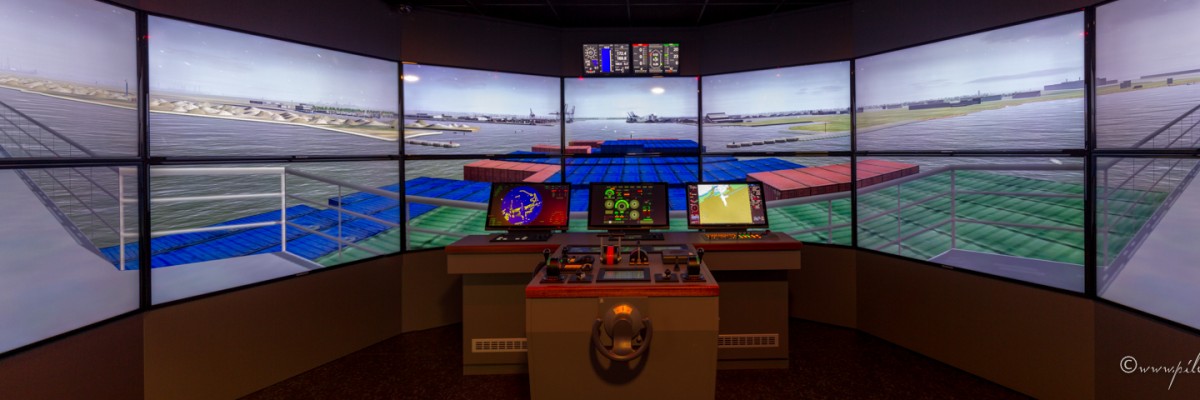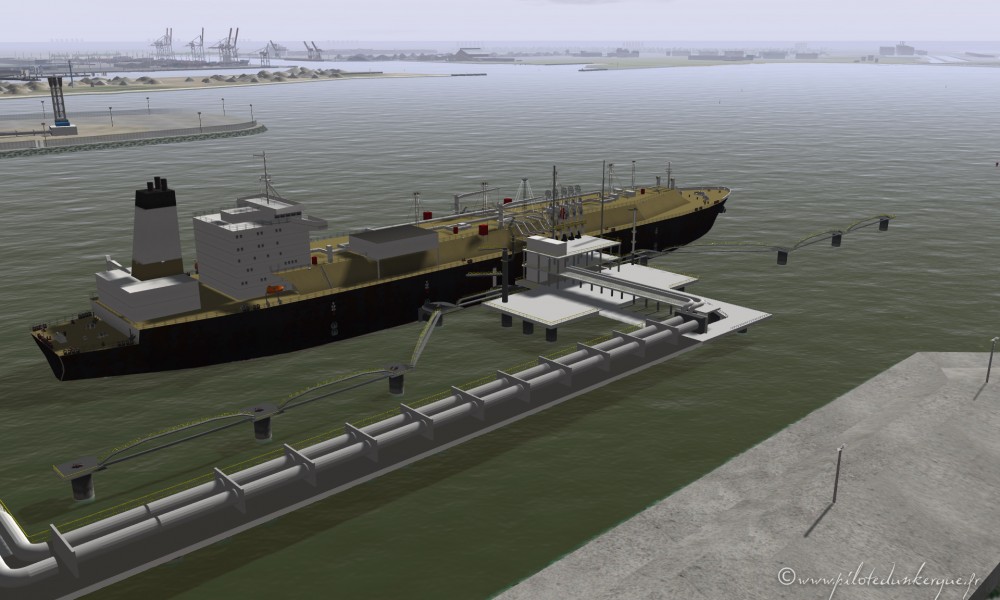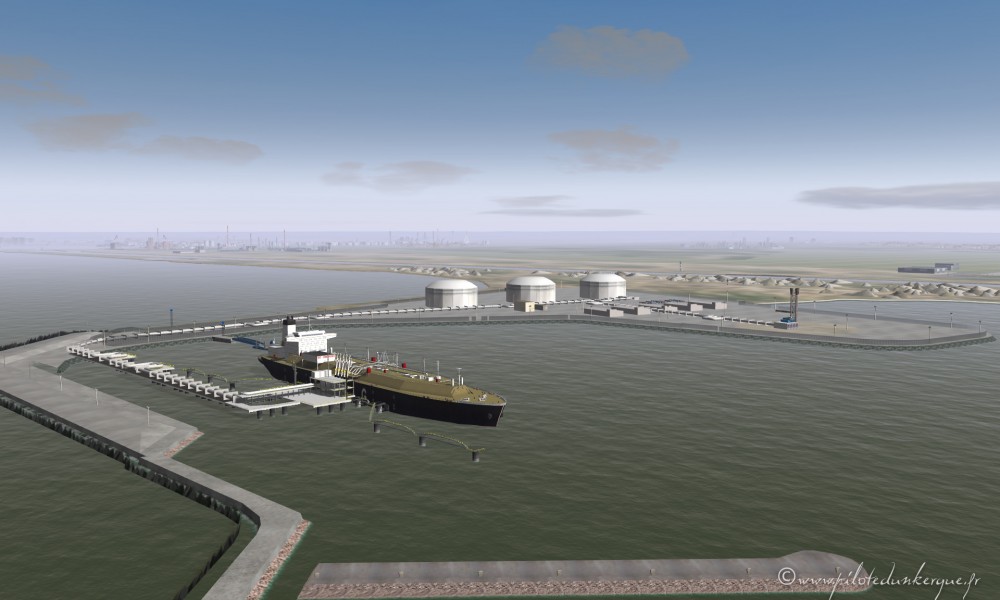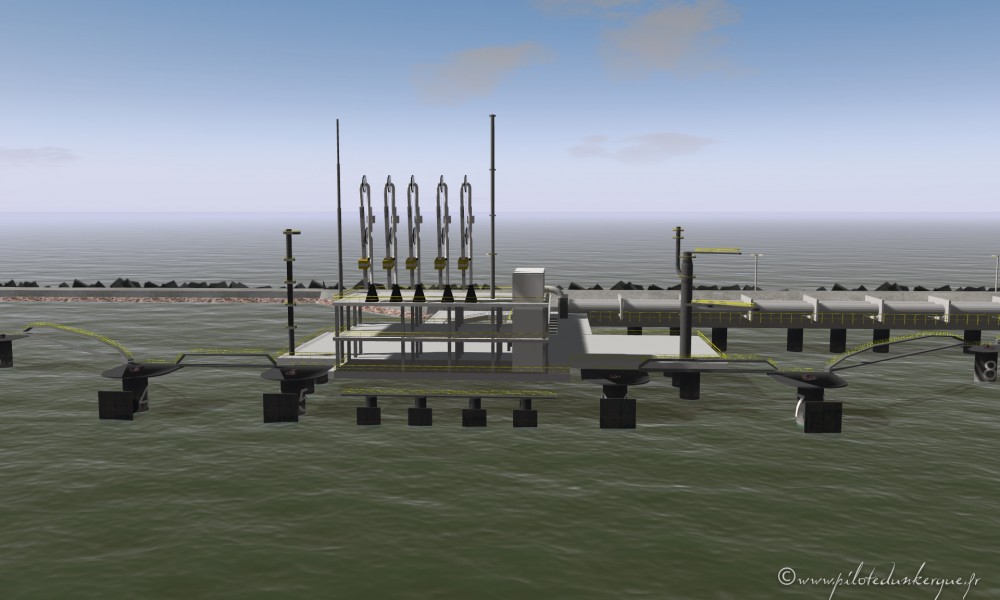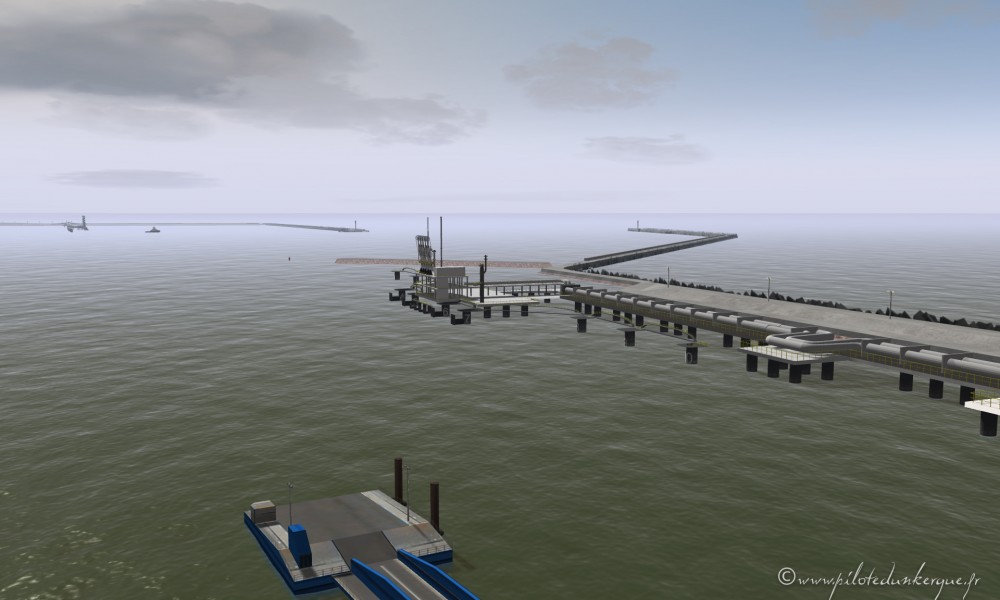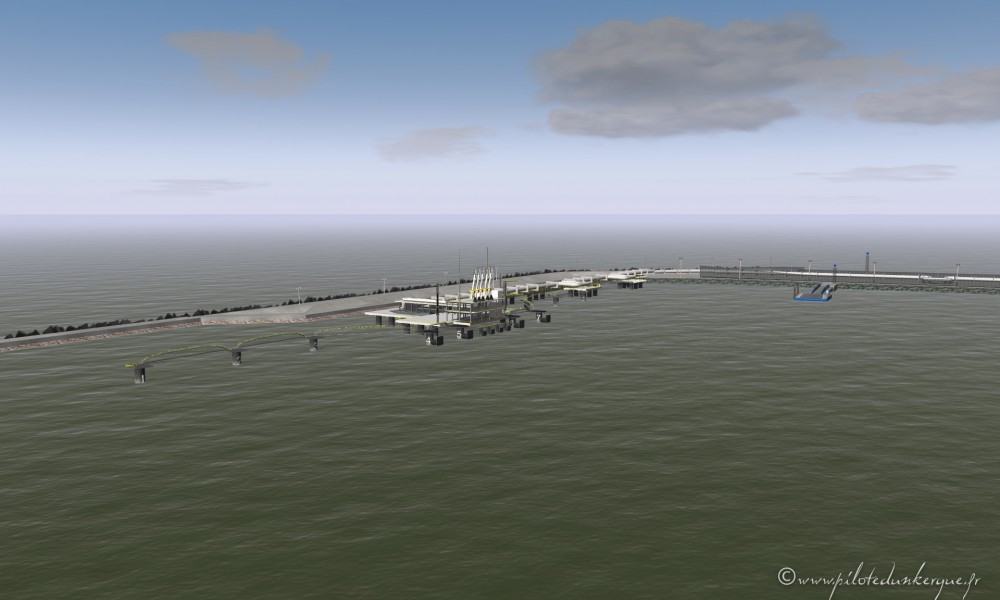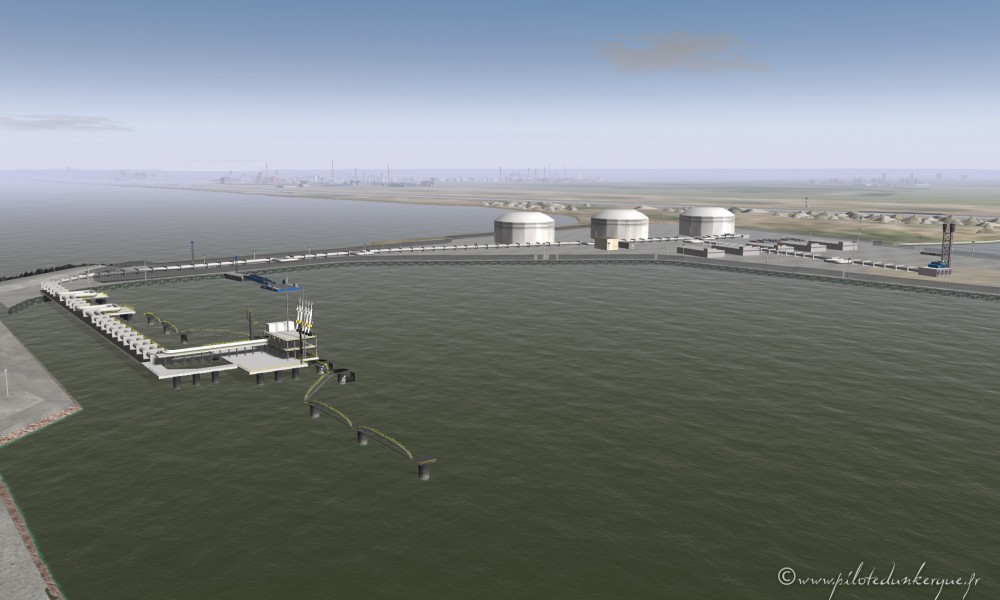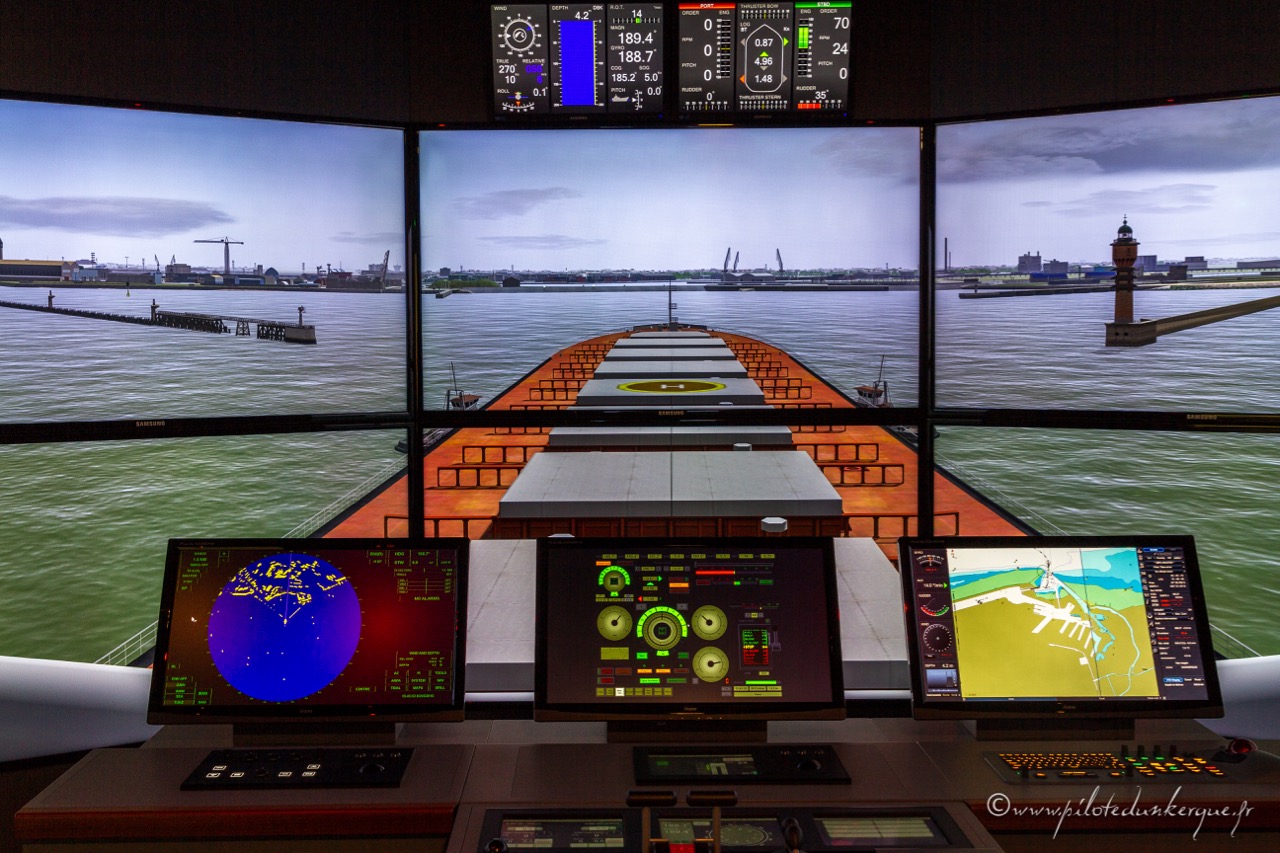
Dunkirk pilots are equipped with the latest generation of professional ship handling simulator inaugurated in September the 8th 2015, the model is the 5000 Pro Navitrainer from TRANSAS company, world leader in simulation systems, and e-navigation maritime surveillance.
Overall concept
The simulator incorporates all the latest computer modeling technology and high-definition display. Fruit of 20 years of experience acquired by the supplier, it has the following specifications:
- A senior instructor room with projector and debriefing tools.
- A realistic navigating bridge with a visual of 210 ° and a rear viewing channel to optimize the realism of maneuvers.
- A room dedicated to the server computer
- With local administrative meeting room and toilets.
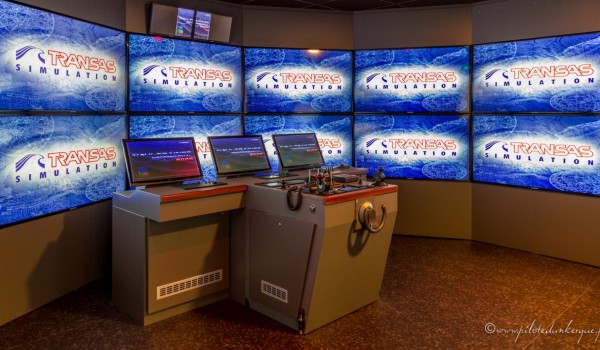
Training
This great educational tool initially to give additional training and support for the junior pilots following an elaborate planning and with an instructor named among the most experienced pilots.
It also allows to anticipate changes in the environment of the port of Dunkirk through the strategic future projects, pilots are indeed able to model and to introduce inside existing databases, structures such as new berth to enable validation of new safe navigation conditions, approaches and improving docking conditions for ever larger vessels.
The simulator also allows:
- Training in ocean navigation and coastal
- Training with automatic radar plotting aid (ARPA).
- Training electronic chart display and information system (ECDIS).
- Training automatic identification system (AIS).
- Training special operations (tug escort tug, Azipod, emergency maneuvers, etc ..)
Scanning of Dunkirk port & areas
Since 2008, more than 20,000 photos were taken of each of the objects in the environment of the port of Dunkirk and its surroundings. Each of the objects has been precisely located by GPS and scans version day and night were performed, this work provides an optimal degree of precision of the mathematical structure of the place. Hydrographic and bathymetric elements complete this colossal work. The database resulting three-dimensional computer model that recreates an ultra realistic environment and a faithful visual reality.
In 2013, we acquired software capabilities, we can now update existing installations or create environments(berth, terminal etc…) or even planned. This allows pilots to anticipate training for ship handling in all weather conditions, and we modeled the implementation of the LNG terminal even before it was built to accommodate under the best safety conditions the first LNG planned for the last quarter 2015.
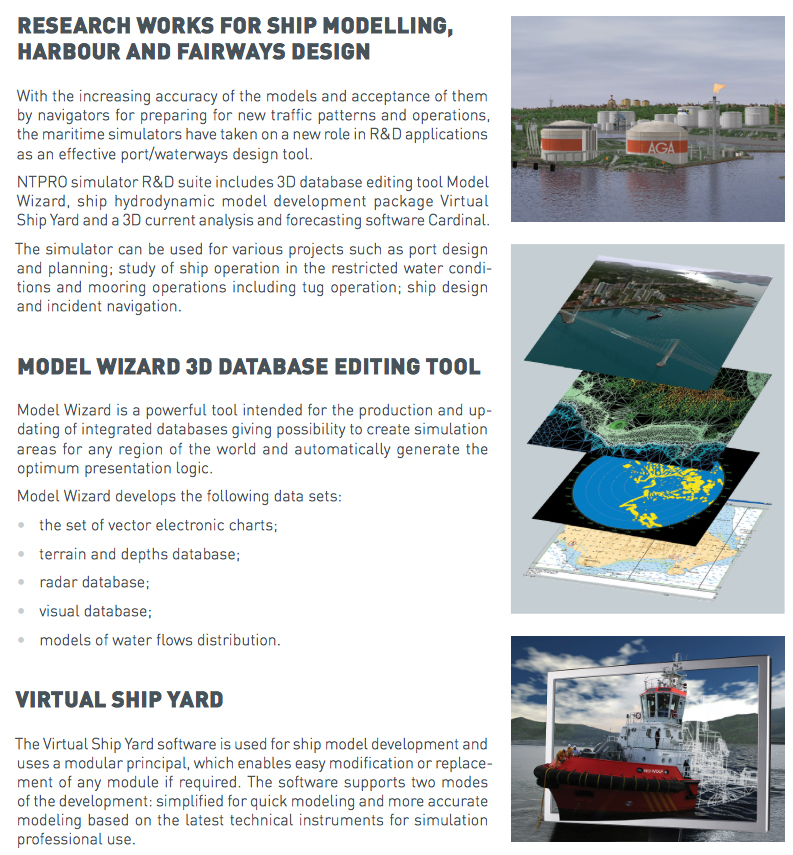
Dunkerque LNG terminal Modeling
The hydrodynamic models
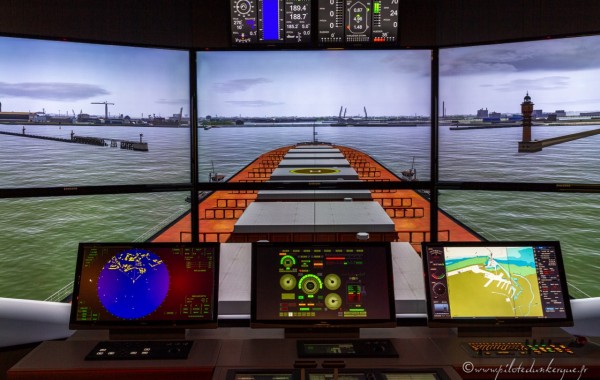
Mathematical models have components at the heart of any training system. The level of fidelity hydrodynamic models must be extremely realistic.
The collection of vessels modeled by Transas has more than 300 models of ships carrying. All models incorporate a complete reaction to external forces and the known effects of water (bank effect, shallow water, sand banks, ship to ship interaction), wind and others, that can be adapted precisely and add to other effects to each model.
This library is constantly updated and this how we get the model of a ultra large container ships (ULCS) such as CMA CGM Alexander Von Humboldt on which we trained before his first call on 12 August 2015.
New seagull 6000
The simulator receives the latest version of the graphics engine available, the seagull 6000 surpasses all the usual formats in the maritime simulation. The main vectors of performance improvement include the following:
- Rendering wakes and bow waves
- Rendering thrusters
- Reflections (sun, port lighting)
- Fog, follow spots
- dynamic shadows
- hiding
- Interaction fixed elements (waves on piers and buoys)
- Current viewing
